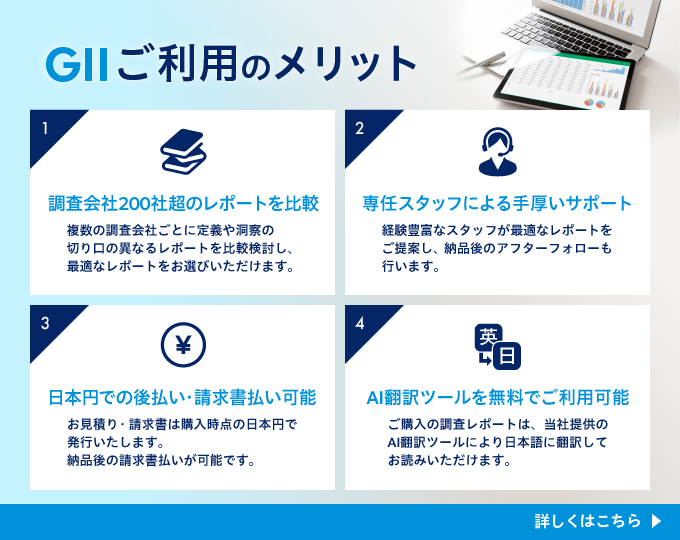
|
市場調査レポート
商品コード
1837393
デジタルテキスタイル印刷市場:印刷技術、プリンタータイプ、材料タイプ、インクタイプ、用途、エンドユーザー、販売チャネル別-2025~2032年の世界予測Digital Textile Printing Market by Printing Technology, Printer Type, Material Type, Ink Type, Application, End-User, Sales Channel - Global Forecast 2025-2032 |
||||||
カスタマイズ可能
適宜更新あり
|
|||||||
| デジタルテキスタイル印刷市場:印刷技術、プリンタータイプ、材料タイプ、インクタイプ、用途、エンドユーザー、販売チャネル別-2025~2032年の世界予測 |
|
出版日: 2025年09月30日
発行: 360iResearch
ページ情報: 英文 184 Pages
納期: 即日から翌営業日
|
概要
デジタルテキスタイル印刷市場は、2032年までにCAGR 7.90%で91億4,000万米ドルの成長が予測されています。
| 主要市場の統計 | |
|---|---|
| 基準年 2024年 | 49億7,000万米ドル |
| 推定年 2025年 | 53億3,000万米ドル |
| 予測年 2032年 | 91億4,000万米ドル |
| CAGR(%) | 7.90% |
加速するデジタル生産能力、持続可能性の原動力、進化する商業的要請が交差する戦略的イントロダクション
デジタル捺染印刷セクタは、加速する技術力と高まる商業的期待の狭間で、極めて重要な岐路に立たされています。プリントヘッドの解像度、インクの化学的性質、デジタルワークフローの統合における最近の進歩は、オンデマンド生産や小ロット生産に適した生地や用途の幅を広げることに集約されています。このシフトは、バリューチェーン全体に有意義な変化をもたらしています。デザイナーはプロトタイピングをより迅速に行い、ブランドは季節やマイクロ動向の需要に俊敏に対応し、コンバータはハイブリッド生産戦略でスループットを最適化しています。こうした業務改善と並行して、持続可能性、トレーサビリティ、サーキュラリティをめぐる利害関係者の期待は、調達基準や製品ロードマップをますます形作るようになっています。
同時に、産業は、原料調達の制約、変動するエネルギーコスト、進化する物流構造など、複雑な供給サイドの力学を乗り越えています。バイヤーとメーカーは、弾力性とリードタイムの確実性を優先してサプライヤーとの関係を再調整しており、ソフトウェア対応のプリプレスワークフローは、無駄を削減し、収益までの時間を短縮するための新たなレバーとなっています。既存企業は、シングルパスとマルチパス機器への設備投資とサービスの差別化とのバランスを取る必要がある一方、新規参入企業は、ソフトサイネージ、テクニカルテキスタイル、パーソナライズされたアパレルなどのニッチな用途セグメントを開拓し、特殊な需要を獲得しています。
この採用は、変革的なシフト、関税の影響、セグメンテーション情報、地域パターン、このセグメントがより高いデジタル導入とよりサステイナブル生産モデルへと移行していく中で成功するために必要な戦略的アクションを集中的に分析するための舞台を整えるものです。
捺染印刷全体の生産モデルと商業行動を再定義する、技術、オペレーション、持続可能性主導の変革に関する説得力のある分析
デジタル捺染の情勢は、競合の境界線と業務の優先順位を共に再定義するいくつかの変革的シフトによって再形成されつつあります。第一に、インクジェットプラットフォームとインク化学品の技術的進歩によって基材の互換性が拡大し、綿、麻、絹などの天然繊維や、ポリエステル、レーヨン、ナイロンなどの合成繊維基材に忠実度の高い印刷が可能になりました。この拡大により、新たな応用領域が開拓され、色の永続性、触感品質、洗濯堅牢度に対する期待が高まっています。第二に、生産のパラダイムが、大量生産型の不透明なサプライチェーンから、分散型の需要主導型生産へと移行しつつあります。ブランドやコンバータは、スループットが経済性を左右する高速連続出力にシングルパスプリンターを活用する一方、高解像度でカラーが重要な作業にはマルチパスシステムが関連性を保っています。
同時に、環境と規制の圧力が、低インクと無溶剤プロセスの採用を促進しています。産業では、さまざまな基材クラスに対して顔料インクや反応性インクが広く採用され、環境フットプリントを削減するために水なしまたは低水処理にますます焦点が当てられています。デジタルカラー・マネージメントと自動化されたプリプレスワークフローは成熟しつつあり、セットアップ時間とインク消費量を削減し、マス・カスタマイゼーションモデルをサポートしています。商業面では、eコマース、消費者直結のブランド戦略、パーソナライゼーションに対する消費者の意欲の高まりが相互に影響し合い、従来型リードタイムや在庫モデルに課題的な短納期・短納期のインセンティブを与えています。
これらのシフトを総合すると、資本集約とサービスの柔軟性のバランスをとり、コストとともにライフサイクルへの影響を優先し、生産と調達の意思決定にソフトウェア主導の可視性を組み込む、新たなオペレーティングモデルが必要となります。研究開発、調達、競合の各チームをこうした動向に対応させる組織は、市場がスピード、品質、持続可能性を軸に再構成される中で、持続的な競争優位性を獲得できると考えられます。
2025年における関税の再調整が、捺染印刷のサプライチェーン全体における調達、製造の現地化、資本計画をどのように再構築したかを厳密に評価します
2025年前後に実施された米国の関税措置の累積的な影響は、デジタル捺染エコシステム全体の参加者にとって、戦略上と運営上の重要な複雑性をもたらしました。関税の再調整は、輸入機械部品、完成印刷機器、特定の特殊インクの相対的なコスト構造を変化させ、バイヤーとメーカーに調達決定、サプライヤーのフットプリント、在庫管理の再評価を促しました。即座の効果は、サプライヤー選定基準の再調整でした。調達チームは、投入コストの上昇を緩和するために、関税、陸揚げコストの透明性、サプライヤーの多様化をより重視しています。
調達にとどまらず、関税は資本計画や製造の現地化戦略にも影響を及ぼしています。一部の企業は、関税の影響を回避し、拡大貨物レーンへの依存を減らすために、ニアショアリングやオンショアリングを加速させました。機器メーカーにとっては、関税によるコスト圧力が、貿易措置の影響を抑えることのできるモジュール設計と現地生産可能な生産内容の重要性を高めました。波及効果は製品ポートフォリオにも及び、いくつかのサプライヤーは、関税の影響を受けやすい部品をより少なく必要とする構成や、マージンや納期を確保するために地域で組み立てられる構成を優先しました。
このような施策転換は、サプライチェーンの可視化ツールの戦略的価値も増幅させました。部品の原産地、貿易分類、関税負担をリアルタイムで追跡することは、シナリオプランニングと価格規律のために不可欠となりました。それと並行して、競合チームは関税関連のコストシフトを透明性のあるメッセージとして顧客に伝え、競争上のポジショニングとマージン保護のバランスを取る必要がありました。今後は、戦略的な製品や市場の再構成と戦術的なサプライチェーンの調整を組み合わせた企業が、サービスレベルや投資の勢いを維持しながら、施策の変動を吸収するのに有利な立場になると考えられます。
技術、基材、インク、用途、購入者の典型を明らかにする権威あるセグメンテーションの統合が、採用チャネルと価値ドライバーを決定します
きめ細かなセグメンテーションレンズにより、技術、装置、基材、インクシステム、用途の垂直方向、買い手の原型にわたって、価値と採用の差別化された促進要因を明らかにします。印刷技術別では、アシッドファブリック印刷、インクジェット印刷、顔料ファブリック印刷、反応性ファブリック印刷があります。インクジェットの集団の中では、Direct-to-Fabric、Direct-to-Garment(DTG)、昇華型がそれぞれ、解像度、基材の柔軟性、運用スループットの間で明確なトレードオフを示します。この違いは、高解像度のテキスタイルファッションや壁装材が特定のインクケミストリーとプリントモードを好む一方で、動きの速いソフトサイネージやスポーツウェアがスピードと洗濯性能を優先するような、投資の選択に反映されます。
よくあるご質問
目次
第1章 序文
第2章 調査手法
第3章 エグゼクティブサマリー
第4章 市場概要
第5章 市場洞察
- 革新的な水性インク配合がデジタルテキスタイル印刷の持続的な成長を促進
- オンデマンド製造プラットフォームにより、大規模な超カスタマイズ型テキスタイルプリントが可能に
- 高速ロールツーロール印刷の進歩により、ファッションブランドの生産コストが削減
- AI駆動型カラーマネジメントシステムの統合により、印刷の精度と一貫性が向上
- プリント生地に近距離無線通信タグを採用することで、インタラクティブな消費者体験を創出
- 小型顔料プリンターの拡大により、室内装飾と室内装飾品市場に新たな機会が生まれる
- プリントヘッドとインクの改良により、ファッションやマーチャンダイジングセグメントでの高品質かつ高速な生産が可能に
- サステイナブル染料代替品は、バイオピグメントや藻類ベースインクの助けを借りて、エコフレンドリー市場で注目を集めている
- 3Dテキスタイルへのデジタル印刷により、ニット、織物、不織布に複雑なデザインを施す
- マイクロファクトリーは、オンデマンドのローカル生産拠点の助けを借りて、消費者の近くで印刷することで輸送時の排出量を削減
第6章 米国の関税の累積的な影響、2025年
第7章 AIの累積的影響、2025年
第8章 デジタルテキスタイル印刷市場:印刷技術別
- 酸性布プリント
- インクジェット印刷
- ダイレクトトゥファブリック
- ダイレクトトゥガーメント(DTG)
- 昇華転写
- 顔料布プリント
- 反応性布プリント
第9章 デジタルテキスタイル印刷市場:プリンタータイプ別
- マルチパスプリンター
- シングルパスプリンター
第10章 デジタルテキスタイル印刷市場:材料タイプ別
- 混合材料
- 天然繊維
- コットン
- リネン
- シルク
- 合成繊維
- ナイロン
- ポリエステル
- レーヨン
第11章 デジタルテキスタイル印刷市場:インクタイプ別
- 酸性インク
- 分散インク
- 顔料インク
- 反応性インク
- 昇華インク
第12章 デジタルテキスタイル印刷市場:用途別
- ファッション&テキスタイル
- 付属品
- 衣服
- スポーツウェア
- ホームデコレーション
- カーテン
- 家具用ファブリック
- 壁紙
- 産業用ファブリック
- ソフトサイネージと展示グラフィック
第13章 デジタルテキスタイル印刷市場:エンドユーザー別
- 大企業
- 中小企業
第14章 デジタルテキスタイル印刷市場:流通チャネル別
- 直接販売
- 販売代理店
第15章 デジタルテキスタイル印刷市場:地域別
- 南北アメリカ
- 北米
- ラテンアメリカ
- 欧州・中東・アフリカ
- 欧州
- 中東
- アフリカ
- アジア太平洋
第16章 デジタルテキスタイル印刷市場:グループ別
- ASEAN
- GCC
- EU
- BRICS
- G7
- NATO
第17章 デジタルテキスタイル印刷市場:国別
- 米国
- カナダ
- メキシコ
- ブラジル
- 英国
- ドイツ
- フランス
- ロシア
- イタリア
- スペイン
- 中国
- インド
- 日本
- オーストラリア
- 韓国
第18章 競合情勢
- 市場シェア分析、2024年
- FPNVポジショニングマトリックス、2024年
- 競合分析
- Aeoon Technologies GmbH
- Agfa-Gevaert N.V.
- AM Printex Solutions
- Atexco Honghua Digital
- ATPColor Srl
- Brother Industries, Ltd.
- Colorjet Group
- Dover Corporation
- Durst Group AG
- Electronics for Imaging, Inc.
- Hollanders Printing Systems B.V.
- JV Digital Printing
- KERAjet S.A.
- Konica Minolta, Inc.
- Kornit Digital Ltd.
- Mimaki Engineering Co., Ltd.
- Mutoh Holdings Co. Ltd.
- Orange O Tec Pvt. Ltd.
- Ricoh Company, Ltd.
- Roland DG Corporation
- Seiko Epson Corporation
- SPGPrints B.V.
- Tex India Enterprises Pvt Ltd.
- The M& R Companies

